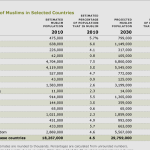There are defined dollars assigned to projects, when there is no enough money or the timeline for completion is missed, who says stop and inspects why? What have members of Congress been told, if anything? Who spends a billion dollars with no results? Sure, this Federal government. The same playbook applied to Obamacare and countless other government operations. Where is the outrage and will this too head to the House Oversight and Government Reform Committee for investigation?
WaPo: Heaving under mountains of paperwork, the government has spent more than $1 billion trying to replace its antiquated approach to managing immigration with a system of digitized records, online applications and a full suite of nearly 100 electronic forms.
A decade in, all that officials have to show for the effort is a single form that’s now available for online applications and a single type of fee that immigrants pay electronically. The 94 other forms can be filed only with paper.
This project, run by U.S. Citizenship and Immigration Services, was originally supposed to cost a half-billion dollars and be finished in 2013. Instead, it’s now projected to reach up to $3.1 billion and be done nearly four years from now, putting in jeopardy efforts to overhaul the nation’s immigration policies, handle immigrants already seeking citizenship and detect national security threats, according to documents and interviews with former and current federal officials.
From the start, the initiative was mismanaged, the records and interviews show. Agency officials did not complete the basic plans for the computer system until nearly three years after the initial $500 million contract had been awarded to IBM, and the approach to adopting the technology was outdated before work on it began.
By 2012, officials at the Department of Homeland Security, which includes USCIS, were aware that the project was riddled with hundreds of critical software and other defects. But the agency nonetheless began to roll it out, in part because of pressure from Obama administration officials who considered it vital for their plans to overhaul the nation’s immigration policies, according to the internal documents and interviews.
Only three of the agency’s scores of immigration forms have been digitized — and two of these were taken offline after they debuted because nearly all of the software and hardware from the original system had to be junked.
The sole form now available for electronic filing is an application for renewing or replacing a lost “green card” — the document given to legal permanent residents. By putting this application online, the agency aimed to bypass the highly inefficient system in which millions of paper applications are processed and shuttled among offices. But government documents show that scores of immigrants who applied online waited up to a year or never received their new cards, disrupting their plans to work, attend school and travel.
“You’re going on 11 years into this project, they only have one form, and we’re still a paper-based agency,’’ said Kenneth Palinkas, former president of the union that represents employees at the immigration agency. “It’s a huge albatross around our necks.’’
DHS officials acknowledge the setbacks but say the government is well on the way to automating the immigration service, which processes about 8 million applications a year. The department has scrapped the earlier technology and development method and is now adopting a new approach relying in part on cloud computing.
“In 2012, we made some hard decisions to turn the Transformation Program around using the latest industry best practices and approaches, instead of simply scratching it and starting over,’’ said Shin Inouye, a spokesman for Citizenship and Immigration Services. “We took a fresh start — a fix that required an overhaul of the development process — from contracting to development methodology to technology.’’
“Since making these changes, we have been able to develop and deploy a new system that is able to process about 1.2 million benefit requests out of USCIS’s total annual work volume,” Inouye added. “Our goals remain to improve operations, increase efficiency, and prepare for any changes to our immigration laws. Based on our recent progress, we are confident we are moving in the right direction.”
Other DHS officials emphasized that if Congress passes immigration reform in the near future, they would have an electronic system that could accommodate any significant changes, including a surge in demand from immigrants seeking legal status.
Until then, immigrants and their lawyers say they will remain hugely frustrated by the government’s archaic, error-plagued system. Processing immigration applications now often involves shipping paper documents across the country, and delays are legend. A single missing or misplaced form can set back an approval by months.
“It’s shameful that they’ve been on this for a decade and haven’t been able to get a working system in place,’’ said Vic Goel, an immigration lawyer in Reston, Va., who has followed the computerization project as a liaison for the American Immigration Lawyers Association.
Online forms get pulled
When the electronic immigration system began in May 2012, it was hailed as “a significant milestone in our agency’s history” by the USCIS Director Alejandro Mayorkas, who is now the deputy secretary of homeland security.
The first form that went live was intended for foreigners who were in the United States on certain types of visas who wanted to renew their non-immigrant status.
But only a fraction of applicants ever used that form before the agency took it offline, after officials decided to abandon the initial technology and development method and move toward a cloud-based system. Some officials inside DHS said the system should never have been launched at all because of reports that it was suffering from so many technical errors.
The second form, released in 2013, didn’t fare much better. It was designed to allow a certain group of foreigners — those wanting to immigrate to the United States and invest in a business — to apply electronically. Only about 80 people used the online form, DHS officials said. More than 10,000 others opted for old-fashioned paper. It was also pulled.
The third form, which debuted last year, is the one that would allow permanent residents to renew or replace their green cards online. In nearly 200 cases, applicants did not receive their cards or had to wait up to a year, despite multiple requests, according to a June report from the USCIS ombudsman.
The agency also hoped to make it possible for immigrants to pay fees online. There are more than 40 kinds of filing fees that immigrants pay to the government with their applications. As of now, however, only one can be paid online — by those who immigrate to the United States as lawful permanent residents. And even this limited electronic payment system has encountered major problems, such as resistance from immigrants who have trouble because they may not have computers or bank accounts.
A series of government reports has skewered the online immigration system, named ELIS after Ellis Island, even after the old technology was scrapped and officials were scrambling to move to the new cloud-based approach. These studies have found that it is slow, confusing and inefficient for immigrants and government employees alike.
A report last year from the DHS inspector general’s office said it sometimes took up to 150 clicks for employees to navigate the system’s various complex features and open documents — and that the system lacked functions as basic as a usable search engine. Internal DHS evaluations have warned of “critical engineering uncertainties” and other difficulties.
“It’s incredibly slow to use the few forms they put online,’’ said Goel, the immigration lawyer. “Most immigration lawyers have concluded the system is half-baked.’’
‘It wasn’t going to work’
Government watchdogs have repeatedly blamed the mammoth problems on poor management by DHS, and in particular by the immigration agency.
When the project began, DHS was only two years old, cobbled together after the Sept. 11 attacks from myriad other government agencies, and the department was still reeling. “There was virtually no oversight back then,’’ a former federal official said. “DHS was like the Wild West on big acquisitions.”
The Government Accountability Office has blasted the immigration service for shoddy planning, saying the agency awarded the IBM contract “prior to having a full understanding of requirements and resources needed to execute the program.” As a result, basic planning documents were incomplete or unreliable, including cost estimates and schedules. The basic requirements for the project, the report said, were not completed until 2011 — nearly three years after the IBM contract was awarded.
IBM had as many as 500 people at one time working on the project. But the company and agency clashed. Agency officials, for their part, held IBM responsible for much of the subsequent failure, documents show.
The company’s initial approach proved especially controversial. Known as “Waterfall,” this approach involved developing the system in relatively long, cascading phases, resulting in a years-long wait for a final product. Current and former federal officials acknowledged in interviews that this method of carrying out IT projects was considered outdated by 2008. “The Waterfall method has not been successful for 40 years,” said a current federal official involved in the project, who was not an authorized spokesperson and spoke on the condition of anonymity.
An IBM spokesman declined to address the criticisms, saying only that the company’s work on Transformation concluded in May.
By 2012, the system’s fundamental flaws — including frequent computer crashes and bad software code — were apparent to officials involved with the project and, according to one of them, and it was clear that “it wasn’t going to work.”
But killing the project wasn’t really an option, according to officials involved at the time. President Obama was running for reelection and was intent on pushing an ambitious immigration reform program in his second term. A workable electronic system would be vital.
“There was incredible pressure over immigration reform,” a second former official said. “No one wanted to hear the system wasn’t going to work. It was like, ‘We got some points on the board, we can go back and fix it.’”
Delays and lost papers
Immigration reform never made it out of Congress, but it could resurface after the presidential election next year. If it does, and if it involves possible citizenship or legal status for the 11.3 million immigrants who are in the country illegally, the policy would flood the government with millions of complicated new applications.
“Oh, God help us,’’ said Harry Hopkins, a former immigration services official who worked on the Transformation project. “If there is immigration reform, they are going to be overwhelmed.’’
The project’s failures already have daily consequences for millions of immigrants who are in the country legally. Immigration lawyers say the current system leads to lost applications, months-long delays and errors that cause further delays. Immigrants miss deadlines for benefits, meaning they lose everything from jobs and mortgages to travel opportunities.
Luke Bellocchi, an immigration lawyer and former deputy ombudsman at Citizenship and Immigration Services, said he has handled at least 100 cases of lost applications in the past few years, mostly for green cards.
“No one knows where these applications are,” he said. “It’s an absolute nightmare.’’
Another concern is national security. DHS officials said they are confident that the current paper-based system is not putting the nation at risk. But others, like Palma Yanni, a D.C. immigration lawyer and past president of the American Immigration Lawyers Association, are dubious.
“If there are some bad apples in there who should not get a green card, who are terrorists who want to do us harm, how on earth are they going to find these people if they’re sending mountains of paper immigration files all over the United States?’’ Yanni asked.

 Images of the moment suspect in Paris attacks was captured.
Images of the moment suspect in Paris attacks was captured.


 Belgium
Belgium Brunei
Brunei Chile
Chile Czech Republic
Czech Republic Denmark
Denmark Estonia
Estonia Finland
Finland France
France Germany
Germany Greece
Greece
